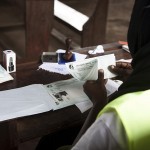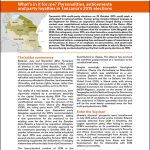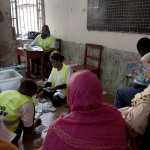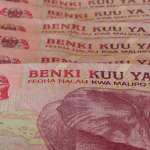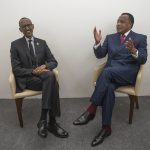Some 7,000km and three time-zones separate these two African nations. By coincidence, their electoral calendars have been aligned since 2010, with the result that Ivorians and Tanzanians will both go to the polls this Sunday, 25 October. ARI Senior Researcher, Nick Branson, suggests seven intriguing commonalities.
- Visionary leadership: Côte d’Ivoire and Tanzania were both led to independence in the early 1960s by far-sighted leaders. Félix Houphouët-Boigny and Julius Nyerere pursued further education abroad, returning with radical ideas for the transformation of their homelands. Houphouët-Boigny trained as a doctor in what is now Senegal, and Nyerere as a teacher at the universities of Makerere and Edinburgh. Acknowledged as founding fathers of their respective nations, Papa Houphouët and Mwalimu Nyerere died in the 1990s but remain totemic figures regularly cited in contemporary political debates. [1]
- Nation-building: The two founding presidents attempted to unite citizens by establishing a sense of nationhood which transcended religious and cultural differences. Grand gestures were orchestrated to accommodate divisions between local Muslims, Christians and animists. Linguistic integration was prioritised, with French and KiSwahili elevated above other languages. Administrative capitals were relocated from cities on the coast to the centre. Dodoma was named as Tanzania’s capital in 1973; parliament moved there in February 1996. Yamoussoukro, the birthplace of Houphouët-Boigny, became Côte d’Ivoire’s capital in March 1983, but plans for the National Assembly to meet there remain unrealised.
- Autocratic elections: Although Houphouët-Boigny and Nyerere pursued radically different economic models for their countries, the two men pursued similar political strategies, centralising political power in presidential republics and establishing a single-party regime. Competition within the Parti Démocratique de la Côte d’Ivoire (PDCI) and Tanganyika African National Union (TANU) – now Chama Cha Mapinduzi (CCM) – rotated elites and injected new ideas, while keeping the presidency off limits.
- Regional leadership: Nyerere initially hoped that Tanganyika would federate with newly independent Uganda and Kenya, but had to settle for a Union with Zanzibar in April 1964. Three years later, Tanzania, Kenya and Uganda made an abortive bid for integration through the East African Community (EAC), which collapsed in 1977 (only to be revived in 1999). From 1961 onwards, Houphouët-Boigny attempted to integrate Francophone nations under the Union africaine et malgache (UAM) and subsequently the Organization Commune Africaine et Malgache (OCAM). In May 1975, he co-signed the Treaty of Lagos which established the Economic Community of West African States (ECOWAS). Both presidents preached Pan-Africanism but also hoped to position themselves as regional power brokers.
- Land disputes: In Côte d’Ivoire and Tanzania, contestation over land rights remains a live political issue. Both states are grappling with a legacy of alienation and appropriation of customary land compounded by the influx of new settlers as the result of ambitious political projects. In Tanzania, Nyerere’s vision of Ujamaa, resettled citizens in model villages. This gave way to a period of privatisation characterised by land grabs. In Côte d’Ivoire, according to Houphouët-Boigny’s famous dictum, land belonged to whoever could put it to productive use. Tensions between settlers from neighbouring Burkina Faso and Mali and “sons-of-the-soil” became more prominent after his death, laying the ground for the Ivorian civil war. Customary land rights were subsequently reinstated and sales of alienated land between 1960 and 2000 rendered illegal. But recent efforts to issue land titles have reportedly been accompanied by profiteering.
- Future petro-states: In recent years, discoveries of offshore oil and gas have excited investors and encouraged politicians to make extravagant statements. This has raised popular expectations of a windfall well before time. Colonial legacies threaten disruption. The delimitation of the maritime boundary between Côte d’Ivoire and Ghana is currently subject to arbitration; while there is no defined boundary between mainland Tanzania and Zanzibar.
- Generation game: Despite an average age of 20 or younger, Tanzania and Côte d’Ivoire contain constitutional provisions requiring presidential candidates to be over 40 years old. In Côte d’Ivoire, this prevented Guillaume Soro, a rebel-leader turned prime minister, from standing for election in 2010. In Tanzania, the charismatic Zitto Kabwe, a former chair of the public accounts committee, found himself ineligible when constitution reform stalled in 2015. In both countries, the leading presidential candidates embarked on their political careers during the single-party era – ancient history for Ivorian and Tanzanian youth.
[1] Nyerere became the first prime minister of an independent Tanganyika on 9 December 1961. Enacting a new republican constitution, he assumed the presidency a year later. Following the union with Zanzibar on 26 April 1964, Nyerere became president of the United Republic of Tanzania. He stood down on 5 November 1985, but remained chairman of the ruling party, Chama Cha Mapinduzi (CCM) until 17 August 1990. Houphouët-Boigny became the first prime minister of an independent Cote d’Ivoire on 7 August 1960, amending the constitution to become president on 27 November 1960. He remained in office until his death on 7 December 1993.







